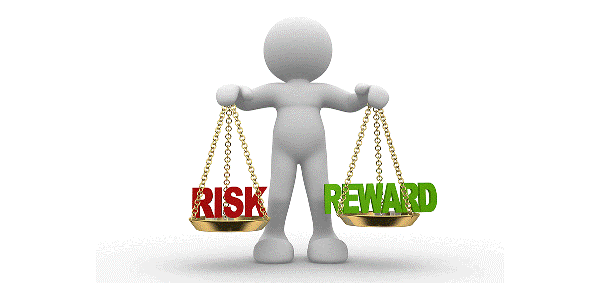
As an investor, you’ll always need to deal with risk of some kind. But how can you manage the risk that’s been made clear by the recent volatility in the financial markets? The answer to this question may depend on where you are in life.
Let’s look at some different life stages and how you might deal with risk at each of them:
When You Are First Staring Out
If you’re early in your career, with perhaps four or even five decades to go until you retire; you can likely afford to invest primarily for growth, which also means you’ll be taking on a higher level of risk, as risk and reward are positively correlated. But, given your age, you have time to overcome the market downturns that are both inevitable and a normal part of investing. Consequently, your risk tolerance may be relatively high. Still, even at this stage, being over-aggressive can be costly.
When You Are in the Middle Stages
At this time of your life, you’re well along in your career, and you’re probably working on at least a couple of financial goals, such as saving for retirement and possibly for your children’s college education. So, you still need to be investing for growth, which means you’ll likely need to maintain a relatively high risk tolerance. Nonetheless, it’s a good idea to have some balance in your portfolio, so you’ll want to consider a mix of investments that align with each of your goals.
When You Are a Few Years From Retirement
Now, you might have already achieved some key goals – perhaps your kids have finished college and you’ve paid off your mortgage. This may mean you have more money available to put away for retirement, but you’ll still have to think carefully about how much risk you’re willing to take. Since you’re going to retire soon, you might consider rebalancing your portfolio to include some more conservative investments, whose value is less susceptible to financial market fluctuations.
The reason? In just a few years, when you’re retired, you will need to start taking withdrawals from your investment portfolio – essentially, you’ll be selling investments, so, as much as possible, you’ll want to avoid selling them when their price is down. Nonetheless, having a balanced and diversified portfolio doesn’t fully protect against a loss. However, you can further reduce the future risk of being overly dependent on selling variable investments by devoting a certain percentage of your portfolio to cash and cash equivalents and designating this portion to be used for your daily expenses during the years immediately preceding, and possibly spilling into, your retirement.
When You Are Retired
Once you’re retired, you might think you should take no risks at all. But you could spend two or three decades in retirement, so you may need some growth potential in your portfolio to stay ahead of inflation. Establishing a withdrawal rate – the amount you take out each year from your investments – that’s appropriate for your lifestyle and projected longevity can reduce the risk of outliving your money. Of course, if there’s an extended market downturn during any time of your retirement, you may want to lower your withdrawal rate temporarily.

As you can see, your tolerance for risk, and your methods of dealing with it, can change over time. By being aware of this progression, you can make better-informed investment decisions.
Aaron Glosser is a certified financial planner for Edward Jones. He can be contacted at 802.655.5512 or Aaron.Glosser@edwardjones.com. His office is on Water Circle in Colchester.
Related Articles & Free Subscription

Don’t Play Politics with Your Portfolio
How to Make Your Money Last During Retirement





Comment here